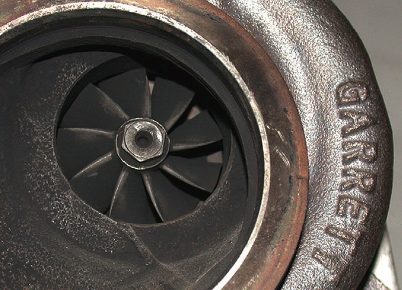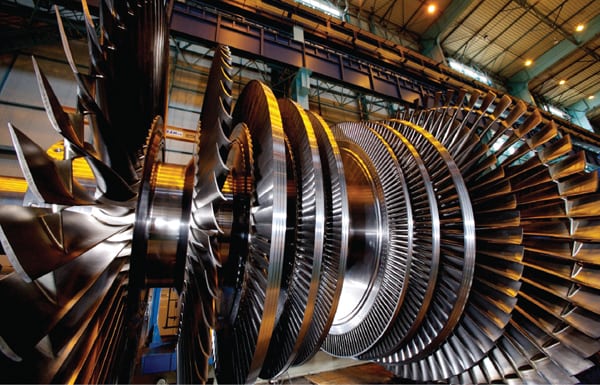Turbine blades are an essential component of modern power generation systems. They are used in steam turbines, gas turbines, and jet engines to convert the kinetic energy of a moving fluid into mechanical energy. Turbine blades are designed to withstand high temperatures and pressures, making them critical to the efficiency and reliability of these machines.
Turbine blades are typically made of high-strength, heat-resistant materials such as nickel-based alloys, titanium alloys, and ceramics. These materials have excellent mechanical properties at high temperatures, making them ideal for use in turbine applications.
There are two main types of turbine blades: stationary blades and rotating blades. Stationary blades are fixed in position and act as nozzles, directing the flow of fluid onto the rotating blades. Rotating blades, also known as rotor blades or turbine buckets, are attached to a rotor and rotate as the fluid flows over them.
The design of turbine blades is critical to their performance and durability. Blades must be designed to withstand high temperatures and stresses without deforming or failing. They must also be designed to minimize aerodynamic losses and maximize energy extraction from the fluid flow.

One of the most important factors in turbine blade design is blade cooling. Turbine blades are exposed to extremely high temperatures, and without effective cooling, they can quickly become damaged or fail. Cooling channels are therefore incorporated into the design of turbine blades to remove heat from the blade surface and prevent thermal damage.
There are several methods of cooling turbine blades, including internal cooling, film cooling, and convective cooling. Internal cooling involves the circulation of a coolant fluid through channels within the blade itself. Film cooling involves the injection of a coolant fluid onto the surface of the blade, forming a protective film that helps to reduce heat transfer. Convective cooling involves the use of a fluid flow over the surface of the blade to remove heat.
In addition to cooling, the aerodynamic design of turbine blades is critical to their performance. Turbine blades are designed to maximize energy extraction from the fluid flow, and this requires careful optimization of blade shape and angle. The design of turbine blades is typically optimized using computational fluid dynamics (CFD) simulations and experimental testing.
In conclusion, turbine blades are a critical component of modern power generation systems, and their design is crucial to the efficiency and reliability of these machines. Turbine blades must be designed to withstand high temperatures and stresses, and effective cooling methods must be incorporated into their design. The aerodynamic design of turbine blades is also critical to their performance, and optimization is typically carried out using CFD simulations and experimental testing.
Turbine blades can be found in a wide range of applications, from large-scale power generation systems to smaller gas turbines used in aviation. In power generation systems, turbine blades are typically used in steam turbines and gas turbines, while in aviation, turbine blades are used in jet engines.
In steam turbines, the blades are designed to extract energy from the steam as it flows over them. The steam is directed onto the blades by stationary nozzles, and as the steam flows over the blades, it causes them to rotate. The rotating blades are connected to a shaft, which drives a generator to produce electricity.
In gas turbines, the blades are used to extract energy from the combustion gases as they flow over them. The combustion gases are directed onto the blades by stationary vanes, and as the gases flow over the blades, they cause them to rotate. The rotating blades are connected to a shaft, which drives a compressor and a generator to produce electricity.
In jet engines, turbine blades are used to extract energy from the hot gases produced by the combustion of fuel. The blades are attached to a rotor, which is driven by the hot gases as they flow over the blades. The rotor is connected to the engine’s compressor and fan, which compresses incoming air and generates thrust.
Turbine blades are subjected to a wide range of stresses during operation, including thermal stresses, mechanical stresses, and aerodynamic stresses. To ensure their reliability and longevity, turbine blades are typically designed using advanced computer modeling and simulation techniques, such as finite element analysis (FEA) and computational fluid dynamics (CFD).
One of the key challenges in turbine blade design is achieving the right balance between performance and durability. The design of the blade must be optimized to maximize energy extraction from the fluid flow, while also ensuring that the blade can withstand the stresses and temperatures encountered during operation.
To address this challenge, engineers use a variety of advanced materials and manufacturing techniques to create turbine blades that are both strong and lightweight. These materials include nickel-based superalloys, titanium alloys, and ceramic matrix composites (CMCs), which have excellent high-temperature strength and durability.
Overall, turbine blades are a critical component of modern power generation and aviation systems. Their design and manufacture are the result of decades of research and development, and the continued advancement of turbine blade technology is essential to meeting the world’s growing energy needs while also reducing carbon emissions.
Advantages of Turbine Blades:
- Efficient Energy Conversion: Turbine blades are designed to extract energy from a fluid flow, such as steam, gas or air, with high efficiency. This makes them an essential component of many power generation systems.
- High Power Output: Turbine blades are capable of producing high power output, making them ideal for use in large-scale power generation systems.
- Reliability: Turbine blades are designed to be highly reliable, withstanding high temperatures, pressures, and stresses. This makes them an ideal choice for use in critical applications where reliability is of utmost importance.
- Versatility: Turbine blades can be used in a variety of applications, from power generation to aviation. This makes them a highly versatile component that can be used in a wide range of industries.
- Advanced Technology: Turbine blade design and manufacturing is a highly advanced field, with continuous improvements being made to materials, design, and manufacturing techniques. This results in highly efficient, reliable, and cost-effective turbine blades.
Disadvantages of Turbine Blades:
- High Cost: Turbine blades can be expensive to manufacture, especially those made from advanced materials like titanium and ceramics. This can make them cost-prohibitive for smaller-scale applications.
- High Maintenance: Turbine blades require regular maintenance to ensure their continued reliability and efficiency. This can be time-consuming and expensive, especially for larger-scale power generation systems.
- Environmental Impact: Turbine blades, like all power generation systems, have an environmental impact. This impact can be reduced through the use of cleaner fuels and the implementation of advanced emissions control technologies.










